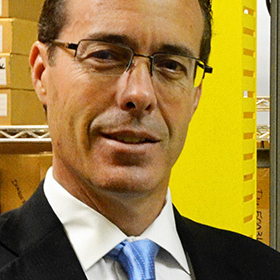This Industry Viewpoint was authored by Michael Morey, Chief Executive Officer, Bluebird Network
The pandemic revealed a lot with network and data center companies. Either strength and innovation to pivot and solve a problem immediately or it amplified weaknesses revealing bigger problems like the digital divide of underserved regional areas, but also how global companies can address their US customer base – both of which are being addressed proactively. Either way, the pandemic was a catalyst for innovation and moved us forward several years within a small period of time.
The pandemic was also a catalyst for always-on demand applications (due to WFH, distance learning, healthcare, fin-tech, government, wireless carriers, gaming and other markets), that require a lot of bandwidth and connected infrastructure for the best performance. This used to require tier one metros, but as the pandemic showed us, this demand has shifted. Formerly known lower tiered markets (2, 3 and 4) are now in top demand.
The surprising element the pandemic brought to US regional players in the Silicon Prairie region was to answer a global call. Not only do regional players need to address their own digital divide, but answer the call from global players who are seeking to grow their footprint in the US, while meeting customer demand in these locations.
From WFH, distance learning, healthcare, fin-tech, gaming and other markets, keeping customers connected at all times is key to an “always on” presence. Global companies are seeking out US regional players to expand their network and service capabilities, while meeting their customers growing bandwidth and capacity requirements. As the restrictions change keeping people at home more, we’ve personally seen demand from gaming companies globally. As for the regional demand, it is from companies providing video conferencing and collaboration companies, and regional clinics needing to be connected to their larger city hospital groups to doing their banking from their mobile phones.
Shifting of the tiers
Tier 1 markets are saturated or as I refer to “densified.” With that said, we are seeing a shift in tiers due to this densification (which sped up in 2020 due to the pandemic). Demand for connectivity and a data center presence is surging in states such as Missouri, Iowa, Illinois, Kansas, Oklahoma, Arkansas, Tennessee, Kentucky, Indiana, Nebraska and Wisconsin. This is due to an increasing need for connectivity amongst the areas of WFH, distance learning, healthcare, fin-tech, government, wireless carriers, gaming and others. The content as well as application and service providers want to further reduce latency while improving performance.
This need is happening regionally to grow and connect within their cities and states as well as build to grow outside the US. Interestingly enough, these same regional players are getting tapped by global companies to help them establish their US footprint then build to expand in the future.
Why the Midwest or “Silicon Prairie” is so attractive
It’s almost like fresh territory filled with opportunity. It offers access to shorter routes and the providers are flexible – so it’s a great foundation for future growth in the US. The importance of high-speed broadband internet continues to increase, particularly in rural communities. Companies who are looking to address the digital divide due are partnering with numerous broadband companies to meet the growing demand. Its attractive tax incentives are perfect to address the growing trends of WFH, distance learning, telemedicine, while positioned to embrace new innovations the pandemic pivots bring.
The pandemic uncovered an appetite for more bandwidth. The market pivoted and sought out formerly secondary markets to provide users the connectivity and performance they demanded in a post-pandemic world. It put the Silicon Prairie in the spotlight due to its strength bringing applications and digital services closer to customers. Never underestimate the underdog!
 Mr. Morey has been serving as President and CEO of Bluebird Network since 2012. With more than 38 years of telecommunications experience, Morey has served as President & CEO of Voxitas, Senior Vice President at NuVox, Regional Vice President of Electric Lightwave, Inc. and held various management positions within his 13 years at AT&T.
Mr. Morey has been serving as President and CEO of Bluebird Network since 2012. With more than 38 years of telecommunications experience, Morey has served as President & CEO of Voxitas, Senior Vice President at NuVox, Regional Vice President of Electric Lightwave, Inc. and held various management positions within his 13 years at AT&T.
If you haven't already, please take our Reader Survey! Just 3 questions to help us better understand who is reading Telecom Ramblings so we can serve you better!
Categories: Cloud Computing · Datacenter · Fiber Networks · Industry Viewpoint






Discuss this Post